A Birders Guide to New Reserve Hides in Yorkshire 2019
Like Yorkshire Buses you wait a long time for one then suddenly…
Wow, what an explosion of bird hides recently! A big surge of building at some of our favourite nature reserves and Bird Observatories in East and North Yorkshire. Thanks to a combination of fantastic fund raising by volunteers, grants and donations by local companies and expertise from our local social enterprise Green Future Building (GFB), we now have six new observation buildings across six of our best reserves in North and East Yorkshire.
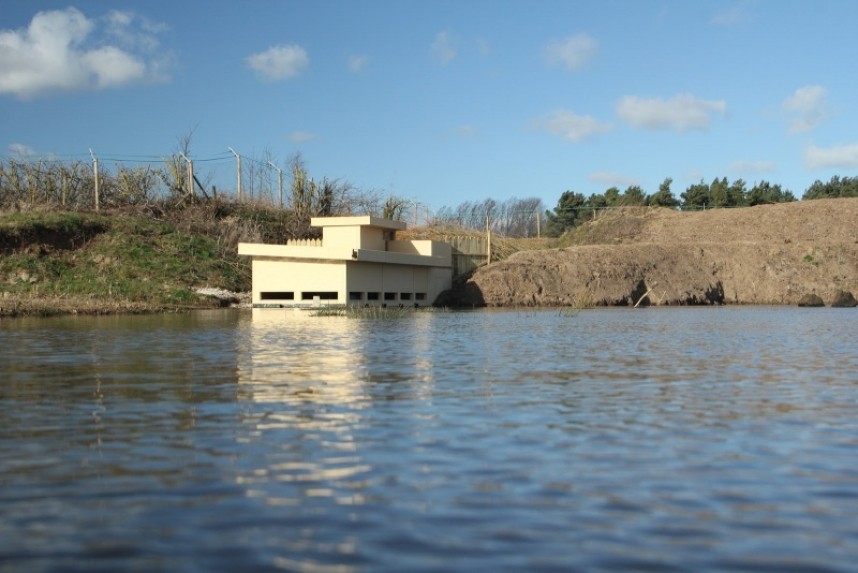
Top Hill Low photo Hide, Bird Hide or Submarine? © Top Hill Low web site blog
So here at YCN we thought it would be a good idea to produce a summary of these fantastic new resources for birders, wildlife watchers and photographers. We have also included links to each reserve so you can plan your visit.
Swantail Hide Wheldrake
Completed in autumn 2018, the new Russel Slack Swantail hide replaces the old Swantail hide. Located at the far end of Wheldrake National Nature Reserve (NNR) managed by Natural England and Yorkshire Wildlife Trust (YWT) it overlooks a large area of wild wetlands and meadows. The hide is at the far end of the riverside footpath, its location provides a quiet retreat surrounded on all sides by this large internationally important reserve.
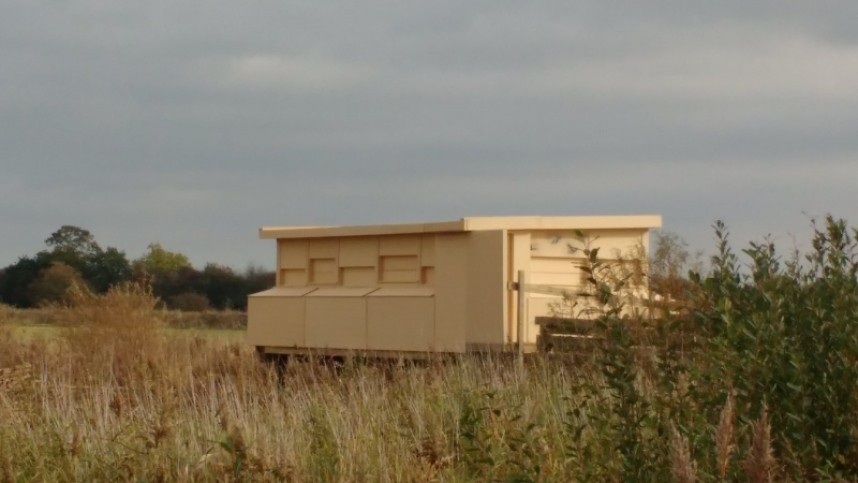
Swantail Hide overlooking the wild wetlands at Wheldrake
In autumn thousands of wildfowl arrive to spend the winter here. Eurasian wigeon, European teal and northern pintail can often be seen in impressive numbers from the hide. In spring and late summer passage waders move through the area including good numbers of whimbrel and black-tailed godwit. These waders are joined by songbird arrivals from the frequently seen reed warblers and sedge warblers to the scarce and enigmatic corncrakes which can occasionally be heard from the hides at dawn and dusk.
This hide was a favourite birding location of one of our best Yorkshire birders Russell Slack who sadly passed away at a young age in 2013, the hide is named in his honour. The hide is open to the public. For access info Click Here
Top Hill Low Photo Hide
Inspired by the GFB and Flamborough Bird Observatory (FBO) photo hide at Thornwick, is the recently opened photo hide at Yorkshire Water’s reserve Top Hill Low. Sunk into the side of the wetland, this awesome hide provides fantastic water-level views of south marsh. The engineering was complex involving a large galvanised tank sunk into the ground one-meter below ground level. The steel tank now forms the protective base and sides for the GFB hide.
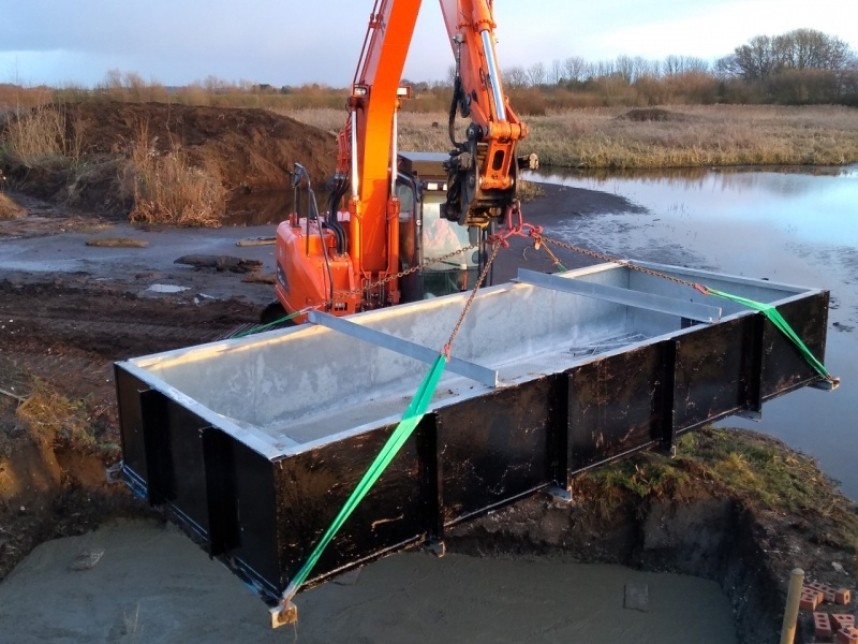
The steel tank for the Top Hill Low Hide © Top Hill Low web site blog
The photo hide looks out onto an area of precisely managed habitat providing a diverse mix of deeper water for wildfowl, banks and perches for kingfishers and muddy islands for waders. On our YCN spring birdwatching and wildlife photography tour in April we had incredible views of waders and wildfowl including bar-tailed godwit only a few meters away from our eyes. YCN Director Steve Race even became transfixed by tiny greylag goose goslings swimming towards his lens!
This structure could fast become the new benchmark in photo hide design. To visit the hide, see Top Hill Low web site Click Here. Entrance to the hide is restricted to members of the reserve but for £28/year that qualifies as great value!
Flamborough Seawatch Hide
Flamborough Bird Observatory is one of the top places in the UK for watching seabirds. From hundreds of thousands of breeding seabirds such as Atlantic puffins and northern gannets to migrant sooty shearwaters from the South Atlantic. However, for many years seawatching here has been dogged by difficult conditions on a dangerous cliff top. At last we have the perfect solution a large safe hide overlooking the wild North Sea.
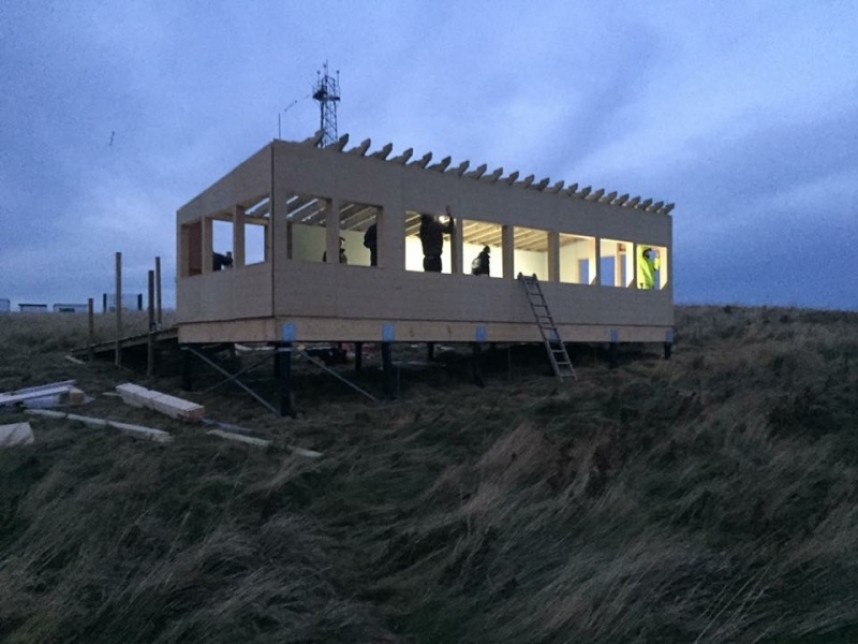
Flamborough Seawatch Hide under construction by GFB and volunteers © John Beaumont
A large amount of volunteer fundraising by FBO was needed to raise enough money for the build which included a donation of £700.00 by Yorkshire Coast Nature. Planning permission was a lengthy and costly process but the pain and patience eventually paid off and now we have a fantastic resource which can be used not only by birders but also by education groups studying birds or cetaceans. The site has recently become one of a new range of Yorkshire Whale & Dolphin Network watch points.
The seawatch hide is dedicated to Brett Richards and the late Martin Garner, both legends in birding. The hide is almost ready to be officially opened and the best way to visit is by joining Flamborough Bird Observatory. They offer daily updates of migrants on the headland as well as an annual bird report. Support the hard work of these dedicated volunteers, to find out more Click Here.
Filey Dams Hide
In 2017 Filey Bird Observatory and Group (FBOG), GFB and YWT were successfully granted funds to restore an area of rank grassland to grazing marsh and wetland pools for wildfowl and waders on the YWT reserve Filey Dams. The restored habitat is critical to wetland birds which need to refuel on their long migrations to and from their arctic breeding grounds.
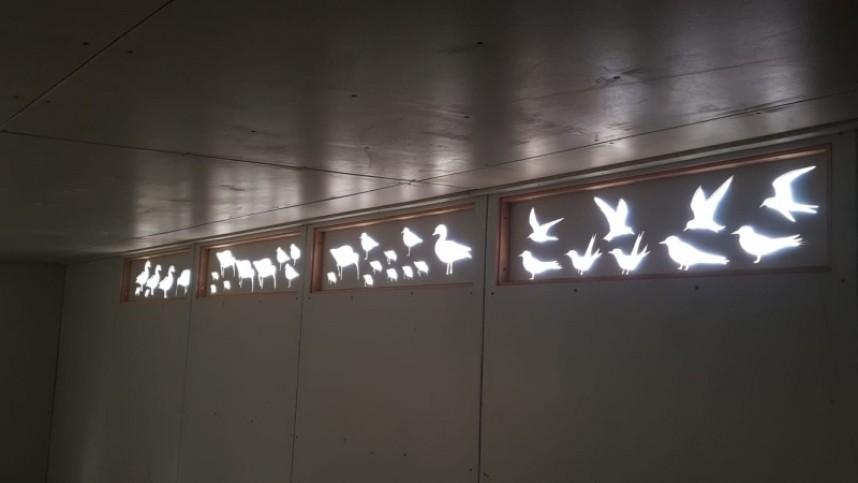
A unique feature of GFB hides, beautiful bird stencil windows shining just the right amount of light into the hides © John Beaumont
There are far fewer wet fields and grazing marshes than there used to be so we have to conserve and work on the ones we still have to make sure they provide high quality habitat. Prior to the new wetland area being created wildfowl and wader numbers were reducing every year. The new habitat needed a new hide which is where GFB came in providing design expertise and construction with support from the hardworking volunteers from YWT and FBOG. To read more about the restoration work Click Here.
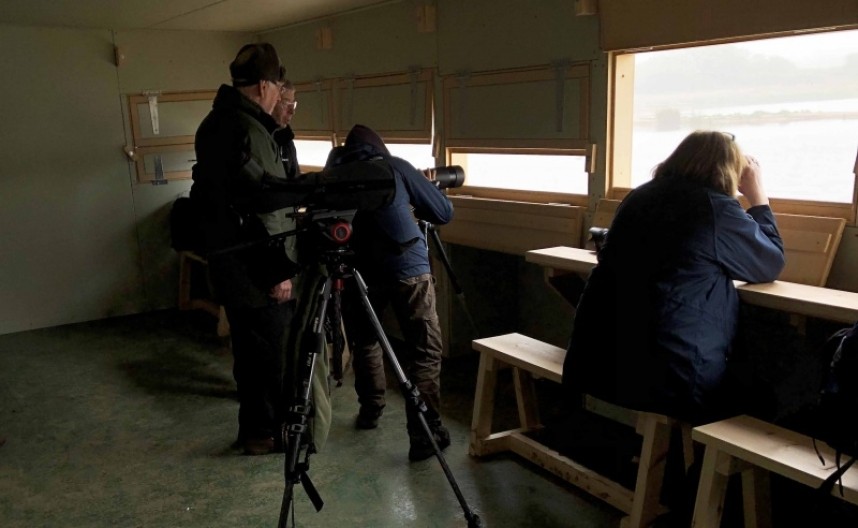
YCN Birding Group in the new Filey Dams Hide © Richard Baines
After watching over the site this winter and spring we have seen how well new habitat is working. More waders have been dropping in to the site than for many years. On the 19th May an impressive eight species could be seen from the hide including greenshanks, spotted redshank and a locally rare temmincks stint. To support the work of FBOG and see their sightings web site Click Here. To find out how to visit Filey Dams see the YWT web site Click Here.
Kilnsea Wetlands Hide
If you had to pick the best birding site for waders on the coast, one which has consistently attracted the biggest diversity of species there would be no competition. Kilnsea Wetlands, managed by Easington Biodiversity Study Group (EBSG) and YWT has been a fantastic site in the past decade attracting many thousands of birds including rarities such as long-billed dowitcher.
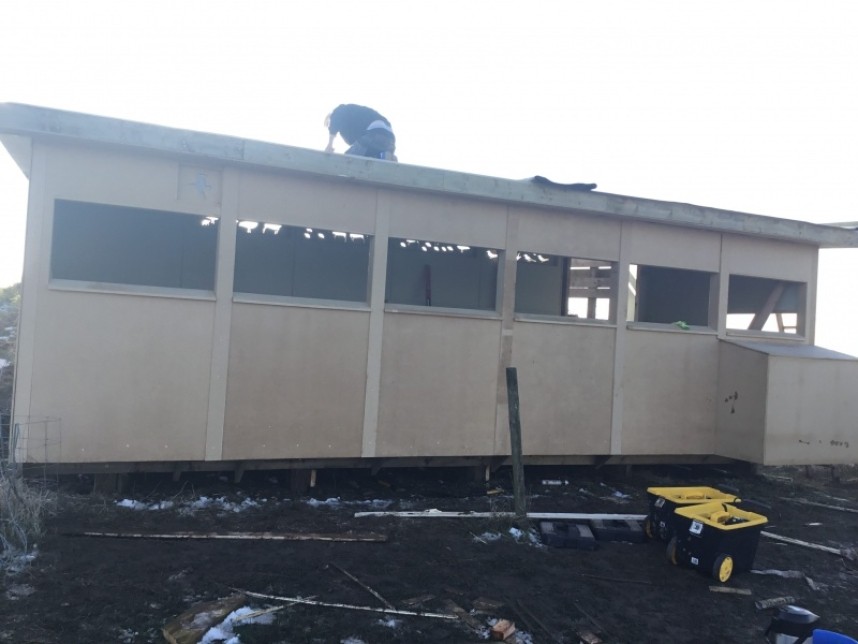
Kilnsea Wetlands Hide © South Holderness Countryside Society
Unfortunately, the hide overlooking the reserve never lived up to the standard of the site. With cramped room for a small number of visitors, you had to be quick to get a seat.
Thanks to a great partnership and fund raising from The South Holderness Countryside Society, Spurn Bird Observatory Trust, British Trust for Ornithology and Mr Andrew Wells at Westmere Farm we now have a wonderful new hide built by GFB. Kilnsea Wetlands is close to the village of Kilnsea and Spurn NNR. Huge numbers of birds gather on the Humber estuary within a few hundred meters of the wetlands. High tide can be the best time to get a seat in the new hide as many waders look for a place to roost or feed after being pushed off the estuary.
The area is also famous for attracting large numbers of migrant songbirds. We recommend starting your visit at the wetlands and then continuing on to explore the rest of Kilnsea and Spurn dropping in at Spurn Bird Observatory building in Kilnsea on the way.
Work on the hide was complete in the early part of this year and it is free to visit with a short, level path leading from the car park. For access info see YWT web site Click Here or to see Spurn Bird Observatory daily sightings from Kilnsea Wetlands Click Here.
Canal Reedbed Hide Ripon City Wetlands
YWT North Regional Manager Jono Leadley and his team love restoring and creating new reserves for wildlife. There is nothing better than improving habitats and then watching wildlife use the habitats you had a hand in improving. Ripon City Wetlands is not only a wonderful wetland for wildlife, its value increases even more due to its proximity to the thriving town of Ripon, a real green lung for the community. The site was once a working gravel extraction quarry. As the site was slowly abandoned, wildlife moved in and now we have a cracking reserve for both people and wildlife.
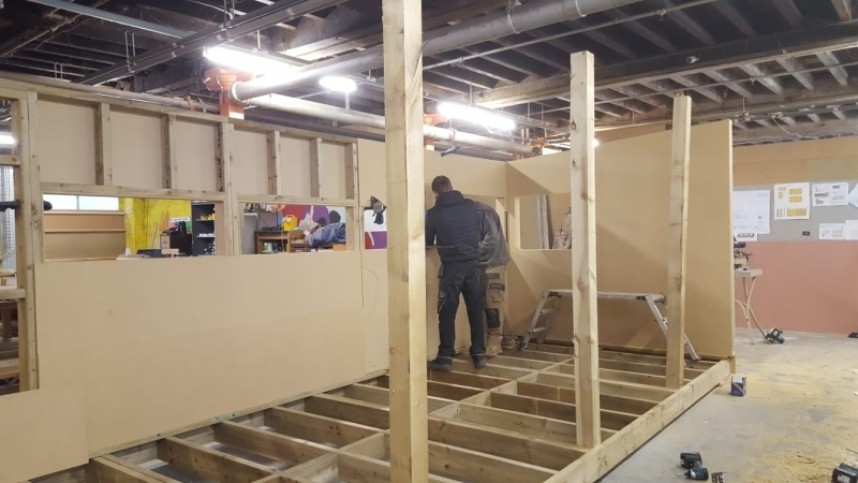
GFB workshop constructing the Ripon Hide © John Beaumont
GFB built the Canal Reedbed Hide in their workshop, transporting it to the site flat pack style. It was then erected on the reserve with the help of staff and many volunteers. The hide overlooks the main wetland which attracts wildfowl and waders including tufted ducks, teal, gadwall and shoveler. In the summer the large numbers of insects including many dragonflies and damselflies attract good numbers of hobby to the site. YCN highly recommend a visit in early summer to watch hobbies dashing over the reed-beds catching invertebrates in flight.
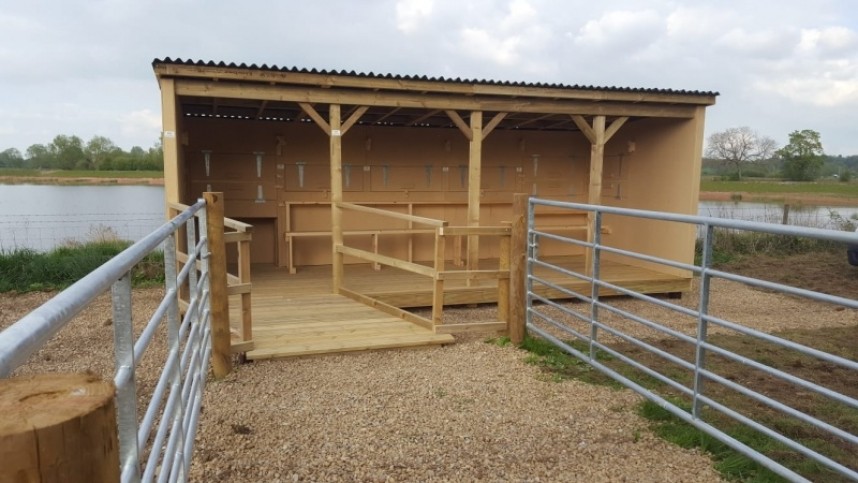
Ripon City wetlands Bird Hide, open observation style © John Beaumont
Ripon City Wetlands is free to visit. Access and more site details can be found on this link Click Here.
Six great reserves with six fantastic new observation hides. As I write this in early June, I can’t wait to get out birding in early autumn and watch the waders and wildfowl return. Thanks to the work of many reserve volunteers, conservation organisations and GFB, I’m really spoilt for choice.
Richard Baines YCN



 Back to Blog
Back to Blog
